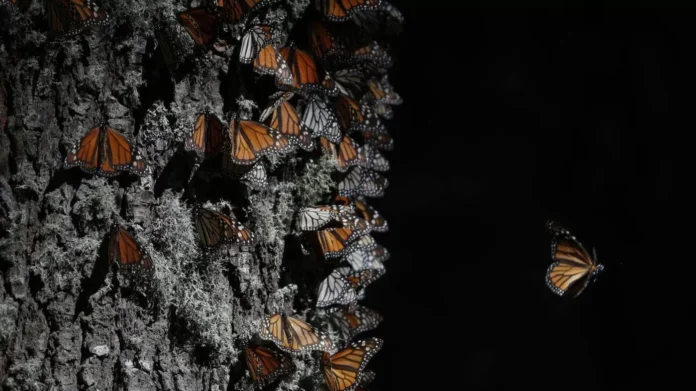Butterflies, the delicate and beautiful creatures that have captured our hearts for centuries, are disappearing from the United States at an alarming rate. A new study has found that their total population has declined by more than a fifth over the course of two decades. This is a worrying trend that needs our immediate attention.
The study, conducted by researchers at the University of Maryland and the University of Georgia, analyzed data collected from more than 500 butterfly monitoring sites across the country. The results were shocking – total butterfly abundance has plummeted by 22 percent between 2000 and 2020. This means that there are now 22 percent fewer butterflies fluttering around in our fields and gardens than there were just 20 years ago.
The decline in butterfly population is not limited to a certain species or region. It is widespread and affects a variety of butterfly species, including the iconic monarch butterfly. These beautiful creatures, known for their distinctive orange and black wings, have seen a decline of 53 percent over the past two decades. This is a staggering number and a cause for great concern.
So, what is causing the disappearance of our beloved butterflies? The study points towards a combination of factors, including habitat loss, climate change, and the use of pesticides. With the increasing human population, more and more land is being converted for agriculture and urban development, resulting in the loss of natural habitats for butterflies. Climate change has also played a significant role in altering the temperature and rainfall patterns, making it harder for butterflies to survive. And let’s not forget the harmful effects of pesticides, which not only kill butterflies directly but also destroy the plants they rely on for food and shelter.
The decline of butterflies may seem like a small issue compared to other environmental problems we are facing. But these tiny creatures play a vital role in our ecosystem. They are pollinators, which means they help in the reproduction of many plant species, including those that we rely on for food. They also serve as an important food source for birds and other animals. A decrease in their population can have a cascading effect on the entire ecosystem.
The good news is that there are steps we can take to help reverse this alarming decline in butterfly population. We can start by creating butterfly-friendly habitats in our own backyards. Planting native flowers and avoiding the use of harmful pesticides can provide a safe haven for butterflies to thrive. Additionally, supporting conservation efforts and advocating for policies that protect butterfly habitats can make a significant impact.
There are also many ongoing initiatives to protect butterflies and their habitats. The Monarch Joint Venture, a collaboration between different organizations, is working towards conserving the monarch butterfly and its migration route. The North American Butterfly Association conducts annual butterfly counts to gather data and monitor butterfly populations. These efforts need our support and participation to be successful.
The decline of butterflies is a wake-up call for us to take action and protect these delicate creatures. It is a reminder that our actions have a direct impact on the environment and the species that call it home. We must act now before it’s too late. As the famous quote by Margaret Mead goes, “Never doubt that a small group of thoughtful, committed citizens can change the world; indeed, it’s the only thing that ever has.”
In conclusion, the decline of butterflies in the United States is a concerning issue that needs our immediate attention. The significant drop in their population over the past two decades is a cause for great concern. But it’s not too late to make a difference. By taking small steps in our own lives and supporting conservation efforts, we can help protect these beautiful creatures and ensure their survival for generations to come. Let’s join hands and work towards a future where butterflies continue to bring joy and wonder to our lives.

